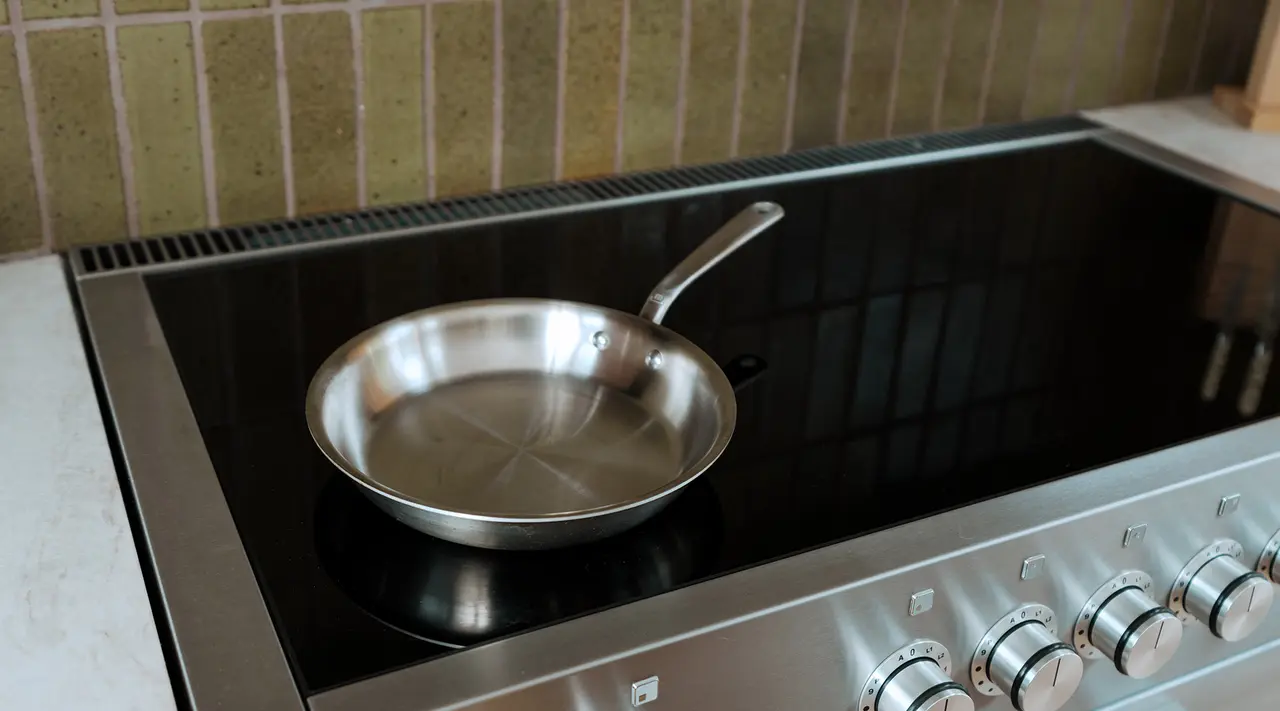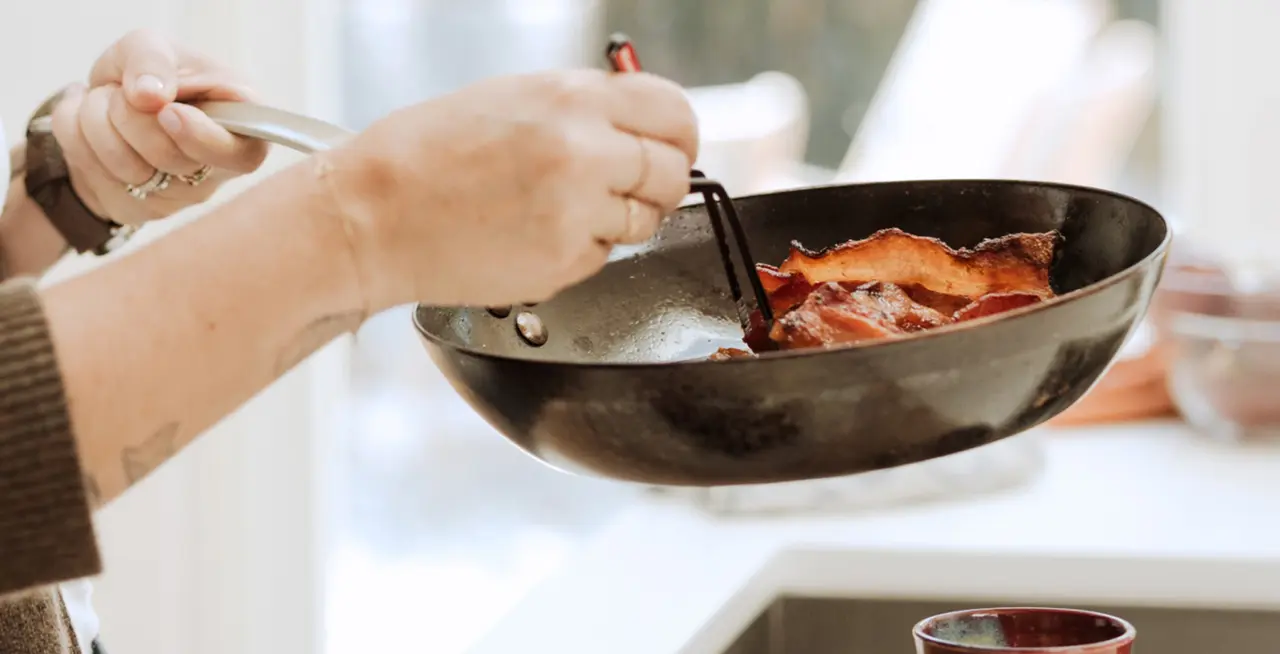Looking to switch to an induction cooktop? You’re not alone: touted for their energy efficiency and environmentally-friendly design, induction cooktops have grown slowly but steadily more popular over the last few years. One of the best things about them, however, is that they’re compatible with the majority of cookware materials—including carbon steel.
Induction stoves work by creating an electromagnetic current to produce heat, which means that whatever cookware you use needs to be made of electromagnetic materials in order to be compatible. Luckily, carbon steel—along with options like stainless steel and cast iron—fits within that category. Here’s how to get the best results while using carbon steel on induction stovetops.
Understanding Induction Cooking

Conventional cooktops—i.e. electric or gas—generate heat using thermal conduction, whereby heat is transferred from the heating element to the pot or pan via direct contact. When you cook with an induction stove or cooktop, however, only the pot or pan heats up, and the burner itself stays completely cool to the touch. This makes induction stoves both safer (fewer burnt fingers or kitchen fires to worry about) and more energy-efficient than gas. Another plus? They’re more responsive than even the best gas or electric stoves, allowing you to quickly cut or lower the heat to avoid burning or overcooking your food.
While you can reap the benefits of induction cooking regardless of what type of induction compatible pan you’re using, some pans do, in fact, work better than others. You should always choose a pan with a flat bottom, for instance: since your pan needs to make direct contact with the burner in order to generate a current, pans with a round, warped, or uneven bottom won’t heat as evenly.
What Makes Carbon Steel Induction Compatible?

As we mentioned, cookware has to be made of an electromagnetic material in order to generate a magnetic current and produce heat. Carbon steel is made from roughly 99% iron—a highly electromagnetic metal—to 1% carbon, making it a fully induction compatible option.
Tips for Using Carbon Steel on Induction Cooktops
Carbon steel is a naturally efficient conductor of heat on its own, which is why it’s one of our favorite materials to use on induction. Not only can you use it to fry, sear, simmer, or sauté just as easily on an induction cooktop as on a gas or electric stove, but it’ll actually heat even more quickly and evenly because of the way induction cooktops transfer heat.
While this is great news if you do a lot of high-heat cooking, you should still exercise caution by preheating your pan slowly: even though carbon steel is quite durable, it’s still subject to warping and thermal shock if it’s heated too quickly.
Another thing to keep in mind is that, because induction cooktops can’t transfer heat to a pan without direct contact, your pan will quickly begin to lose heat if you keep it off the stove for more than a few seconds. Since there’s no actual flame, you also won’t be able to flame-roast whole peppers or eggplant on the stove.
Is All Cookware Induction Compatible?

Induction-compatible cookware isn't hard to find—you just have to know what to look for. If you own an induction cooktop, it’s important to do your research when shopping for new cookware. Luckily, most manufacturers will label their cookware as either “Induction Compatible” or “Not Induction Compatible”.
Any material that doesn’t have high amounts of ferromagnetic materials won’t do well on induction stovetops. Copper cookware, solid aluminum, aluminum clad, glass, and even some ceramic and stainless steel products will not work on induction as they won’t have enough ferromagnetic (if any) materials to connect to the electromagnetic current.
To get use of that induction stove, you are going to want to use cookware that's not only induction-compatible, but optimized for induction cooking, like any piece in our Stainless Clad, Enameled Cast Iron, or Carbon Steel Collections.
Induction Cookware to Avoid
Be sure to steer clear of cookware with pasted-on bottom plates made of a ferromagnetic material. This is a cheaper alternative during the manufacturing process than making the entire pot or pan out of induction-compatible materials. While it will technically work on induction stoves, it leads to hot/cold spots on the cookware, particularly up the sides (which will not heat up if not made from the same ferromagentic materials).
If you have an induction stove, we highly recommend looking for cookware—like ours—that is instead fully made of induction-compatible materials from top to bottom. This leads to no uneven cooking or hot or cold spots—only even heating and unparalleled heat response.
Ready to Shop?
No one should ever have to part with their carbon steel cookware. Thankfully, you can keep your favorite durable, responsive, naturally non stick frying pan and reap all the benefits of a new induction stovetop—no compromise required.
And if you're looking to build out your induction-compatible cookware collection even further, each piece in our Stainless Clad, Enameled Cast Iron, and Non Stick Collections are optimized for induction cooking.
























